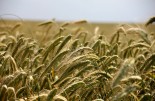Morningstar: Passive sustainable funds assets double in 3 years
Morningstar: Passive sustainable funds assets double in 3 years

Morningstar Manager Research today publishes the Passive Sustainable Funds: The Global Landscape 2020 to illuminate the choices currently available to investors globally, with a particular focus on the two regions that have seen the greatest adoption of these funds, Europe and the U.S.
The report is split into three parts. In the first part, our team of passive strategies analysts introduce our dataset and present our taxonomy. In the second, they examine the landscape, looking at trends in asset growth, asset flows, product development, and fees on a region-by-region basis. In final section, they provide a list of key criteria investors should consider when choosing a passive sustainable fund.
Key takeaways include:
- As of June 30, 2020, there were 534 sustainable index mutual funds and exchange-traded funds globally, with collective assets under management of $250 billion. Both the number of products and the money invested in them have more than doubled over the past three years. Europe remains the largest market for sustainable passive funds, accounting for more than three fourths of global assets. The U.S. represents 20%, up from 13% three years ago.
- Europe is home to the largest and most comprehensive market for passively managed sustainable funds. More than half of all passive sustainable funds are domiciled in the region, and these collectively accounted for 76% of global assets under management as of the end of June 2020.
- ETFs Gain Ground, but Index Funds Retain Lion’s Share of Assets. Sustainable index funds have historically been the passive vehicle of choice in Europe, but growth in size and breadth of the offering in the ETF space has begun to redress the balance. The number of funds available in each wrapper is now comparable.
- Record Launches See Global Menu Swell. The total number of sustainable passive funds available to investors globally more than tripled over the trailing five years to the end of June 2020. New fund launches reached a record 98 over 2019, and with 84 new entrants in the first half of 2020, this is likely to be eclipsed again.
- Fixed Income Remains Under cultivated. For all the growth in global assets, the development of the passive sustainable fixed-income space remains at an embryonic stage, particularly outside of Europe.
- Sustainable Fee Premium Remains in Most Markets. As for fees, passive sustainable funds across regions tend to charge expense ratios that are higher on average than those levied by their vanilla passive peers. Should global inflows continue to rise, we will be sure to see increased price competition as providers vie for assets.
Kenneth Lamont, Senior Manager Research Analyst Passive Strategies, comments: “Europe’s dominance is largely a reflection of the age of its sustainable fund market. Asset levels are supported by institutional investors with sustainable mandates, particularly Scandinavian public pension, sovereign wealth, and insurance funds. Individual countries such as France have introduced mandatory climate-related reporting for institutional investors that has further forced sustainability onto the investment agenda. Globally, passive sustainable funds make up only 12% of the overall sustainable fund universe, whereas passive funds make up 24% of the overall fund market. This implies that there is plenty of room for growth.”
The universe of passive sustainable funds is defined as index funds and exchange-traded funds globally that use ESG criteria as a key part of their selection or weighting process and/or indicate that they pursue a sustainability-related theme and/or seek a measurable positive impact alongside financial return. The sustainable funds group does not contain funds that employ only limited exclusionary screens. Money market funds, feeder funds, and funds of funds are also excluded.










